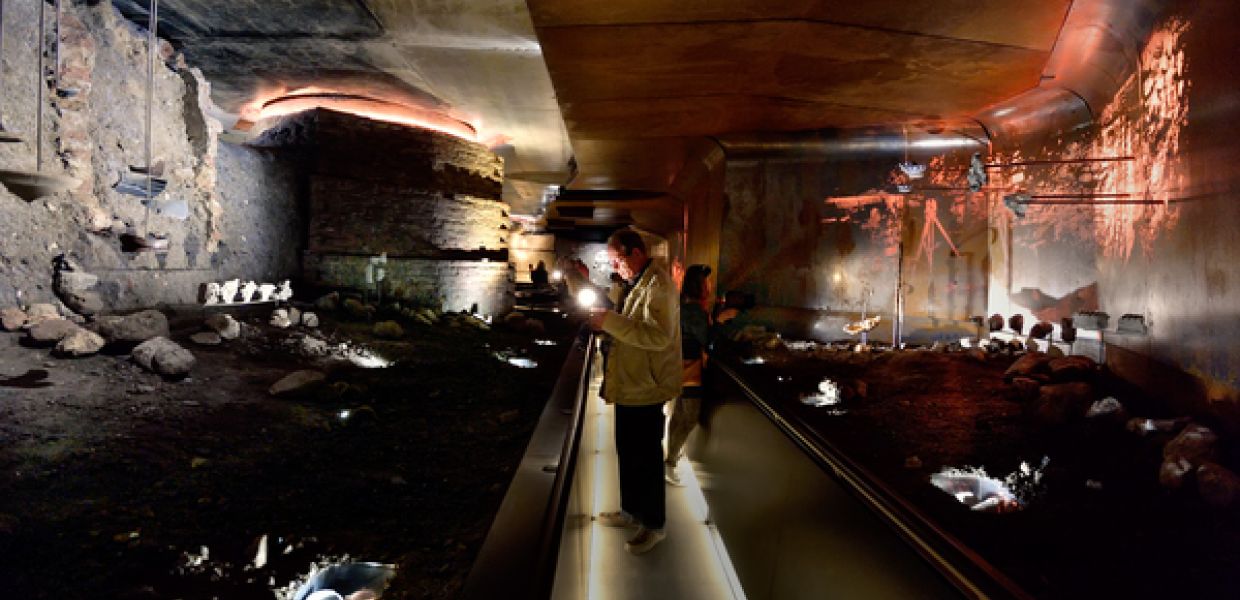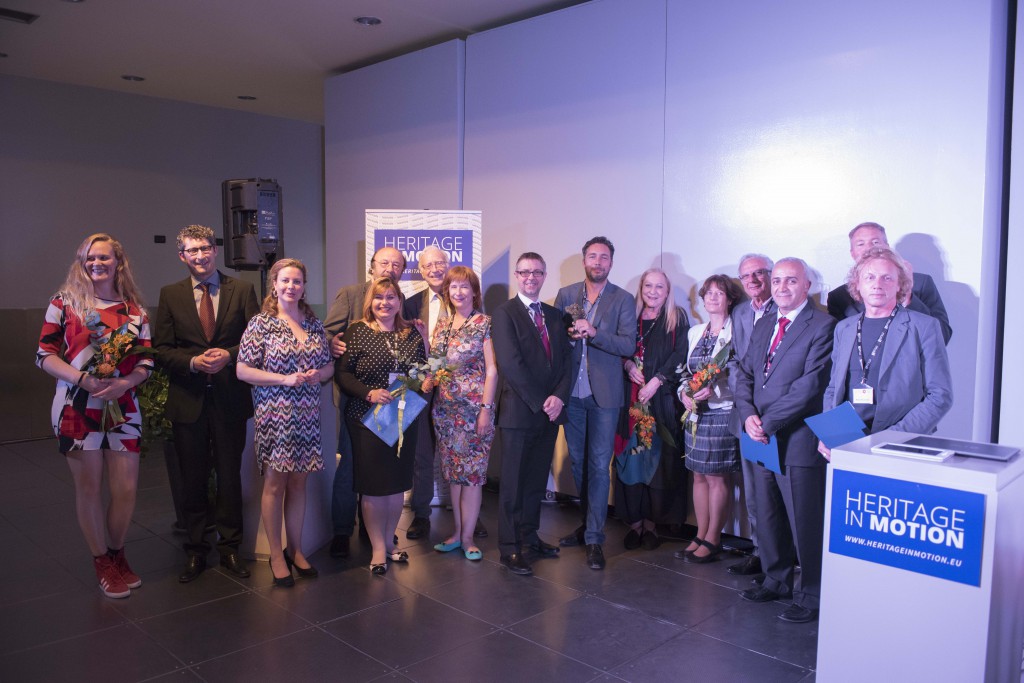The institutions putting heritage in motion

Calling all cultural institutions, museums and archives! The Heritage in Motion awards are open for entries until 1 December. The awards recognise European institutions harnessing multimedia technology to create exciting new routes into their collections, and each year, four institutions walk away with a prestigious prize. Here, we catch up with last year’s finalists to find out more about their award-winning projects.
At the European Museums Academy conference earlier this year, four very different but equally inspiring projects won over judges to receive a Heritage in Motion award. What they share is their fresh take on visitor experience, promoting interactivity and the possibilities of digital technology over more traditional approaches.

This year's winners at the Heritage in Motion awards. Image: Heritage in Motion
From the UK, the Framework Knitters Museum in Nottinghamshire came out top for the website and online content category with their interactive drama, Breaking the Frame, which follows the story of a young knitter, Ben, during the 19th century Luddite Uprising. Paul Baker from the museum explains that it was “developed in response to my desire to transform our school visitors from 21st century voyeurs into active participants”, and enabled them to implement something affordable yet of a consistently high standard for visitors.
In the mobile device category, the Netherlands’ Rijksmuseum won the award for their family quest app. Inviting families to solve mysteries together, Renate Meijer from Rijksmuseum explained the thinking behind it was encourage collaboration between different age groups while learning about the vast collections. “One of the good things about it is that most groups do figure out all the riddles, exactly because they work together.”
In the film and video category, the jury chose the Gubec Theatre by the Museum of Peasant Uprisings in Gornja Stubica, Croatia. This transformed a 40 metre long monument into the backdrop for a performance commemorating the 440th anniversary of the Peasant’s Revolt. “Matija Gubec as a national hero was the motivation”, explains Goranka Horjan, the museum's former director, while “the sculpture itself offered a powerful storytelling background with potential to create huge emotional impact.”
Last but not least, winner of the Best Achievement award went to DOMunder, an archeological experience under Domplein square in Utrecht. The project was dreamt up by design firm Tinker Imagineers. Petra Dijkstra observes that a “layered past” lay invisible beneath the square so the team’s ambition was “to open it up to the wider public… and reveal the fantastic stories” it has to tell.

A visitor in DOMunder. Image: Tinker Imagineers
As this brief summary shows, the ideas that captured the judges’ attention were diverse, and each project posed different challenges for the institutions bringing them to life. For Renate and the Rijksmuseum team, it was to ensure players’ different devices stayed connected, and that everyone could feel like a ‘winner’. For the Framework Knitters Museum, the complex narrative, with opportunities to veer off in different directions thanks to the viewer’s decision-making powers, proved the biggest challenge. “The script was written to reflect the many possibilities each decision offers.” For the Croatian team, the sheer size of the monument was the obstacle they had to overcome. “We had to do a very accurate mapping of the vast surface in order to enable all the different multimedia parts to fit perfectly.”
Despite these challenges, the payoff for all the institutions was the praise and satisfaction of the visitors. Paul was delighted to find school visits rose dramatically, and the film was championed by the teaching union, even inspiring one young student to enter a competition for young historians - and win! In Utrecht, people revelled in the opportunity to play an active role, while at the Rijksmuseum Renate liked that different children found different aspects of the quest that they at excelled at. For Goranka, the feedback was “extraordinary”, and they hope to secure financial support to make the display permanent - something she imagines will be easier thanks to the award.
The four projects are impressive examples of the kinds of things cultural institutions can offer visitors thanks to the possibilities of digital technology. If you or the institution you work for is involved in a similar initiative, you can apply for a Heritage in Motion award until 1 December. We wish you lots of luck with your application!

